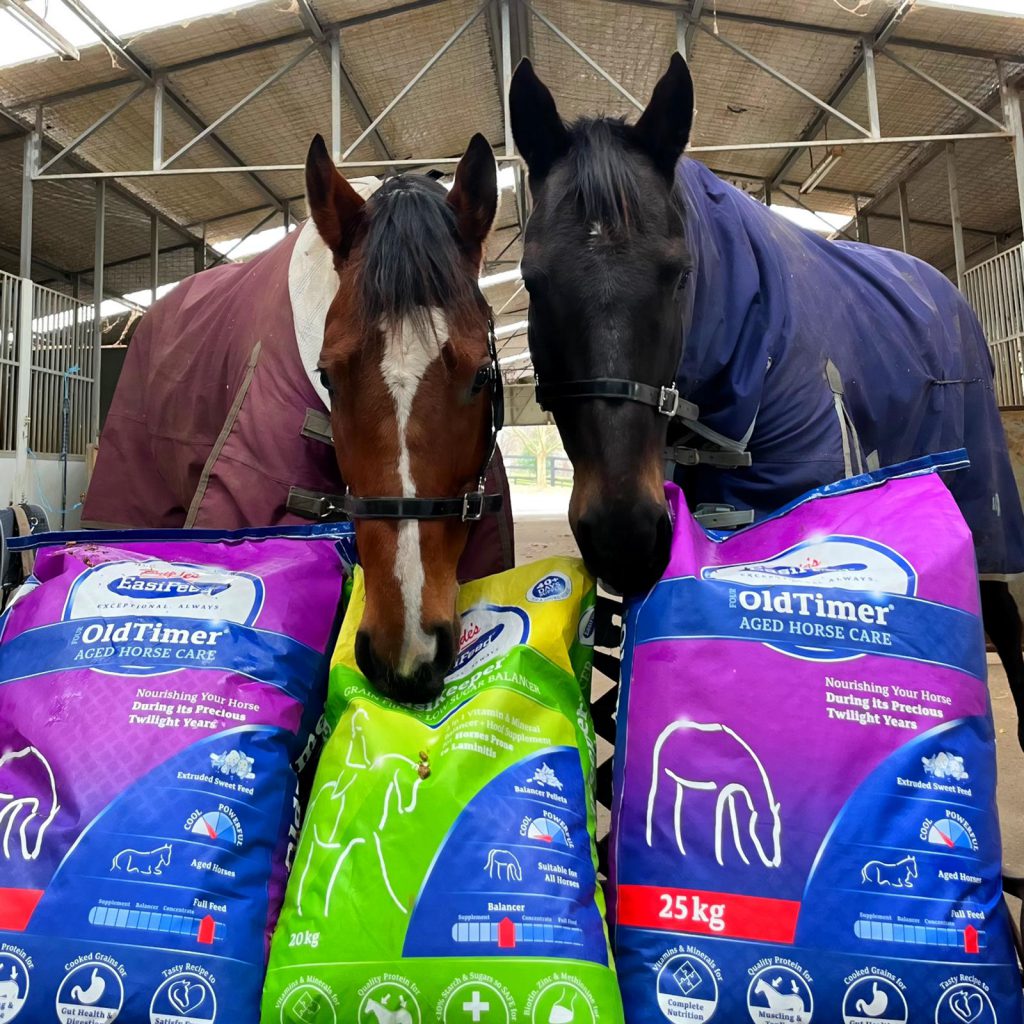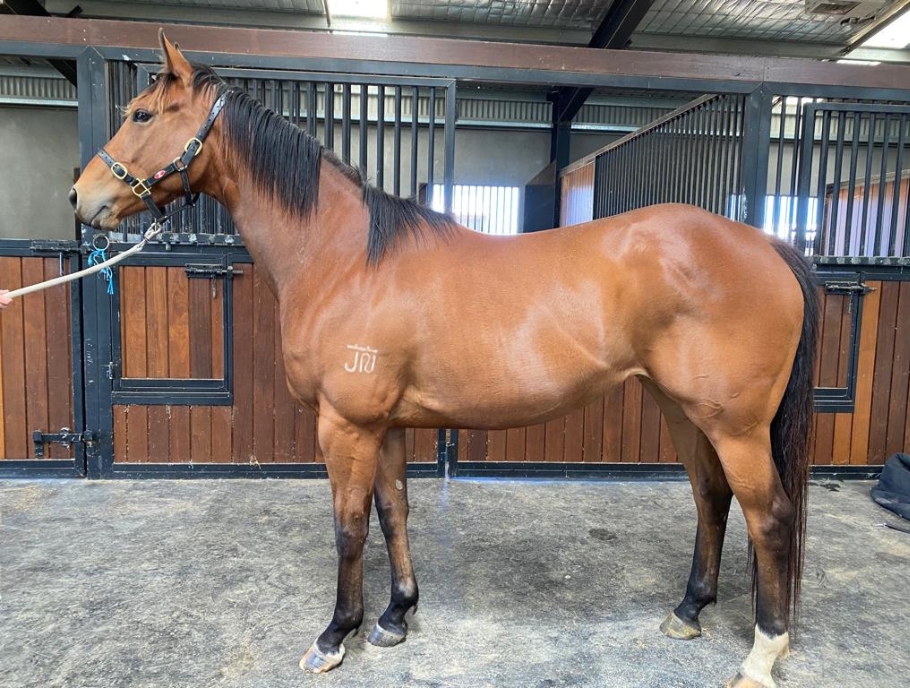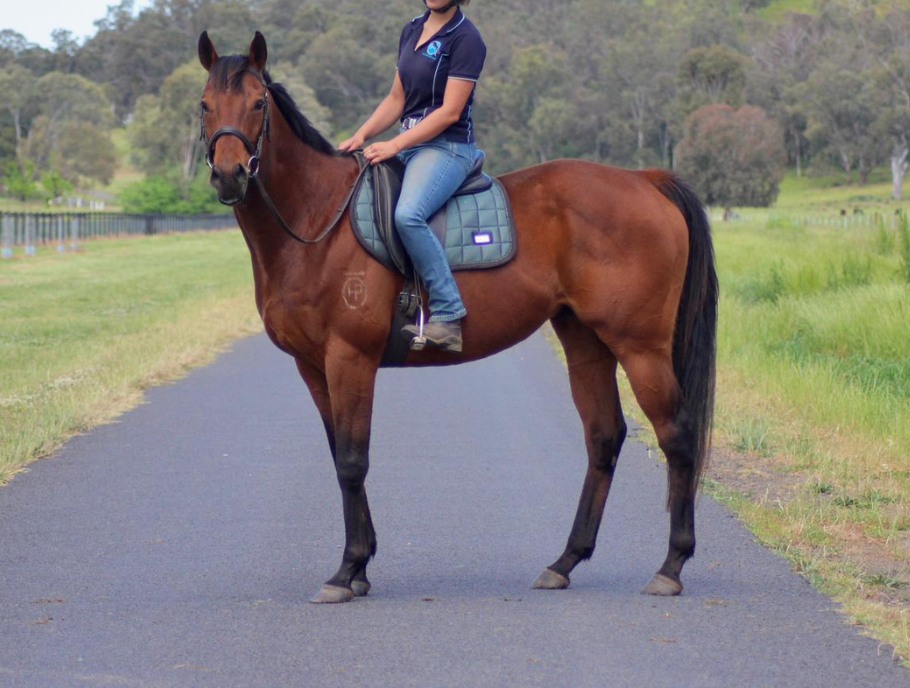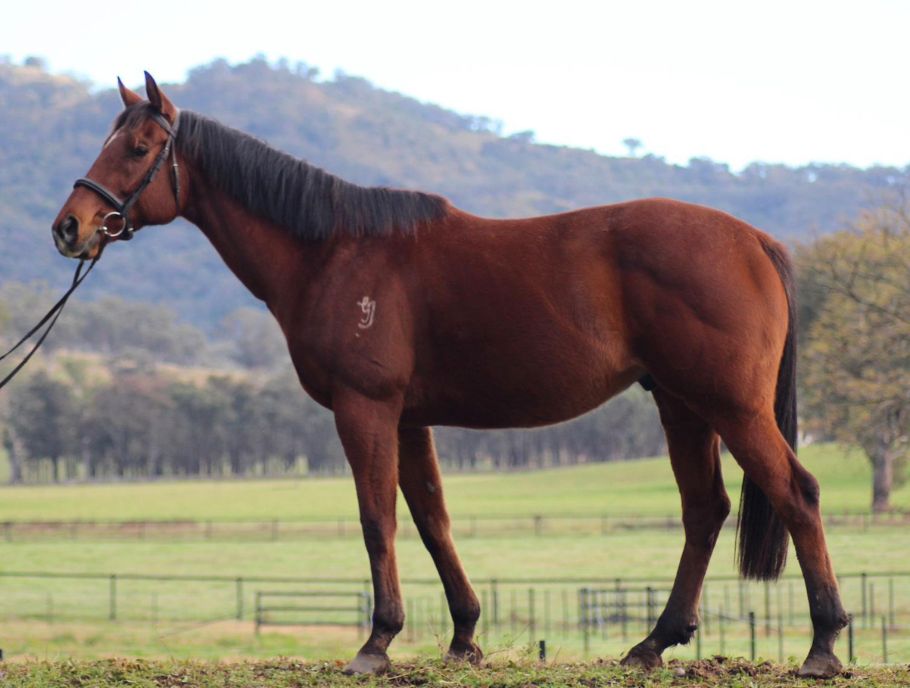
Feeding The Off The Track Thoroughbred
By Pryde’s EasiFeed, written by Bethanie Clark BAnVetBioSc (Hons I)
Thoroughbreds transitioning from racing to other disciplines including eventing, show jumping, dressage, showing, and pony club is becoming more common, providing these young horses a change of career and home. Rehoming and retraining an off the track thoroughbred is certainly not without its challenges but has the opportunity for great reward with patience and time. Transitioning from racing to performance, pleasure or being a paddock mate involves several major changes, one of those being their diet. In this article we hope to give you some tips on transitioning and feeding your off the track Thoroughbred.
While feeding an off the track thoroughbred is similar to feeding any other horse, they do have some specific requirements, considering the diet that they have come from, which will be outlined below.
Base their diet on plenty of forage: While this is the number one requirement of any horse, it is particularly important for the off the track thoroughbred. When they arrive at their new home, having access to plenty of pasture is ideal, if this is not the case providing at least 2% of their body weight per day in forage sources such as a combination of pasture, lucerne and grassy hay is recommended. It is important to remember that in vast majority of cases these horses have come from a high grain (average of 7kg/day), low forage/fibre diet. As is becoming more well known, high grain, high volume diets with low amounts of forage/fibre have negative effects on hindgut health, likely resulting in poor fibre fermentation and digestion of forage sources, lack of production of B vitamins and biotin and a poor appetite. So, ensuring a high forage and fibre intake of a variety of sources will assist in restoring a healthy balance of the microbial population of their hindgut. It is important to note that this will be a gradual process and will require patience and the implementation of other management strategies to promote hindgut health. This high grain, low forage diet in combination with exercise also puts racehorses at higher risk of Equine Squamous Gastric Disease (ESGD), so it is possible that your off the track does have some degree of ulceration. Feeding a high forage diet, particularly of long-stem forage, promotes chewing, saliva production and buffering of gastric acid, which will help to minimise the worsening of ulcers. However, studies have shown that ulcers are unlikely to completely resolve on their own, so if deemed necessary, getting a gastroscope conducted and putting them on appropriate omeprazole treatment is recommended. Treatment of ulcers is likely to also assist with improving appetite and overall wellbeing.
Supplement their diet appropriately: with so many options it is often difficult to decide what to feed an off the track thoroughbred. While there are many variables to consider, one of utmost importance is choosing a feed that will promote hindgut health. While it can be tempting, particularly if the horse is underweight, to feed high amounts of grain-based products, in an attempt to put condition on quickly, this is not going to be beneficial for re-establishing the microbial population of their hindgut. Instead, basing their diet on fibre and forage, as discussed above, and providing supplementary feed around this is going to be more beneficial long term. If they are an adequate weight upon arrival or have been maintaining their weight on forage, a vitamin and mineral balancer pellet can be added to their diet to ensure their vitamin and mineral requirements are met without increasing their digestible energy intake. If they are needing to gain weight or are not maintaining weight well on forage alone, a low starch and sugar, high fibre, full feed can be added into their diet. This will provide a higher amount of digestible energy in their diet and help to promote weight gain without compromising the re-establishment of fibre fermenting bacteria in their hindgut. The provision of a fortified or full feed, that contains vitamins and minerals will ensure that their vitamin and mineral requirements are also met, if the feed is fed at the recommended feeding rate.
Consider the addition of biotin: Often off the track thoroughbreds have weak and brittle hooves, likely the result of poor hindgut health and subsequent lack of production and absorption of B vitamins. As the microbial population of their hindgut re-establishes, the production and absorption of B vitamins will improve. While this process occurs, they may benefit from supplementation with biotin to help improve hoof quality. An effective dose of biotin is 20mg per day for a 500kg horse, so it is important to look for a product that will provide this amount. Ensuring a balanced diet, with all vitamin and mineral requirements met, will also help to promote hoof quality and growth.
Monitor their feed intake: It is important to continue to monitor their feed intake and ensure they are consuming their feed and are given the opportunity to consume their feed. Off the track thoroughbreds can be fussy eaters, so it is important to check that they are eating what you are providing to them. If they are fussy with their feed or stop eating it, the first step is to remove any additional supplements or salt from their feed, if they have been added, until they start eating again and they can be slowly re-introduced. Allowing them access to pasture, restoring hindgut function and treatment of gastric ulcers will also assist with re-gaining appetite over time. If they are in a paddock with other horses, it is also important to note where they are in the pecking order and if they have the opportunity to eat all of their feed. Having lived the last couple of years probably housed on their own, they tend to get used to being able to leave feed and come back to it as they please, so it may take them some time to adjust to feeding behaviours when housed with other horses, so it is important to give them time to adjust. If they are struggling with maintaining weight and not able to eat their feed, it would be worth separating them at mealtimes.
Feeding for beginning work and re-training: Often the concern with feeding off the track thoroughbreds is their feed providing them with too much energy when they begin ridden work again. This can be experienced if high amounts of feed are being provided to help with weight gain or even maintenance. Having their diets predominantly based on forage and appropriate supplementary feed that is fibre based, as recommended above, is also a helpful way to promote calm behaviour as they begin ridden work and re-training. As they get further along in their training and education, their diets can be adjusted to accommodate changes in their requirements.
Example diets for off the track thoroughbreds suitable for paddock rest and the introduction of light work:
Weight Maintenance for a 500kg horse:
- Constant access to pasture or ad lib access to good quality grass hay
- 2-4kg good quality lucerne hay
- 500g EasiKeeper
- Which provides 20.3mg of biotin
- Constant access to salt lick and clean, fresh water
Weight Gain for a 500kg horse:
- Constant access to pasture or ad lib access to good quality grass hay
- 3-5kg good quality lucerne hay
- 2kg Easi Off-The-Track
- Which provides 20.8mg of biotin and a yeast prebiotic
- Constant access to salt lick and clean, fresh water

Latest Horses
Team Thoroughbred Newsletter
Subscribe to Redzel’s Roundup, the Team Thoroughbred e-newsletter, and be the first to know about our special events and activities, receive important information from our equine welfare veterinarians, read good news stories, go into the draw for Team Thoroughbred giveaways and most importantly be part of a passionate community of Thoroughbred lovers!


